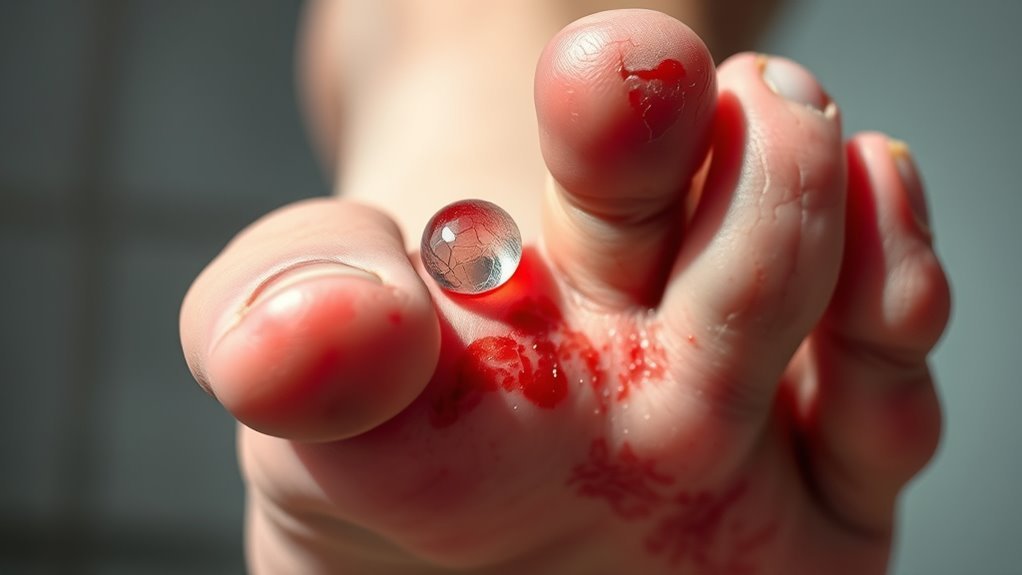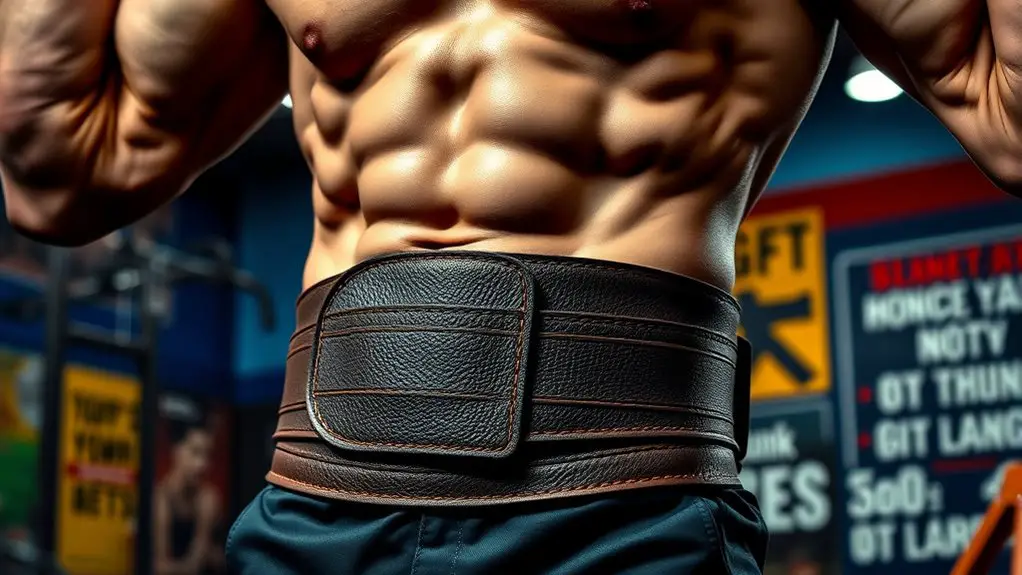Yes, athlete’s foot can spread easily. It typically occurs through direct contact with an infected person or contaminated surfaces like gym floors and public showers. Walking barefoot in such areas increases your risk. The fungus thrives in warm, moist environments, particularly between your toes. To protect yourself, it’s important to maintain good foot hygiene and avoid sharing footwear. If you want to learn more about how to prevent and treat athlete’s foot, there’s plenty more to discover.
Understanding Athlete’s Foot: Causes and Symptoms
Athlete’s foot, affecting about 15% of the population at some point, is a common fungal infection that can cause discomfort and irritation. This pesky condition usually starts between your toes, where moisture and warmth create the perfect breeding ground for fungi. You might notice redness, itching, and peeling skin, which can quickly turn into an annoying distraction in your daily life. If left untreated, it can worsen, leading to more severe skin irritation and even cracking, making it harder to enjoy your freedom. Remember, maintaining good foot hygiene and keeping your feet dry can help prevent this troublesome infection. So, don’t let athlete’s foot hold you back—take charge and keep your feet healthy!
How Athlete’s Foot Spreads: Modes of Transmission
Fungi thrive in warm, moist environments, making it easy for athlete’s foot to spread in various ways. One of the most common methods is through direct contact with an infected person. If you walk barefoot around someone who has it, you might pick it up without even realizing it. Additionally, contaminated surfaces—like gym floors, locker rooms, and shared showers—are breeding grounds for the fungus. When you step on these surfaces, the spores can stick to your feet. It’s essential to be mindful of where you walk and what you touch. Keeping your feet dry and clean is your best defense against this pesky condition. So, take charge of your foot health and avoid unnecessary exposure!
High-Risk Environments for Infection
When you frequent places where moisture and warmth are prevalent, you’re increasing your chances of encountering athlete’s foot. Public showers and gym lockerrooms are notorious for harboring fungi, making them high-risk zones for infection. If you’re not careful, the damp floors and shared footwear can expose you to the fungus that causes this irritating condition. Communal pools might seem like fun, but they can also be breeding grounds for athlete’s foot, especially if proper hygiene isn’t practiced. By being aware of these environments, you can make smarter choices about where you go barefoot. Stay vigilant in these places to enjoy your freedom without the worry of picking up an unwanted fungal infection.
Preventive Measures to Avoid Athlete’s Foot
Understanding the environments that harbor athlete’s foot is just the first step in protecting yourself. You can take control of your foot health by practicing good foot hygiene and moisture management. Here are some effective preventive measures:
| Measure | Description | Frequency |
|---|---|---|
| Wash your feet | Clean with soap and water | Daily |
| Dry thoroughly | Focus on areas between toes | After washing |
| Choose breathable shoes | Opt for materials like canvas | Daily |
| Change socks regularly | Use moisture-wicking fabrics | Daily or as needed |
Treatment Options for Athlete’s Foot
If you’re dealing with athlete’s foot, it’s vital to explore effective treatment options to alleviate symptoms and prevent recurrence. Topical treatments are often your first line of defense. Over-the-counter antifungal creams or sprays can quickly target the infection, providing relief from itching and burning. You’ll want to apply these medications as directed, usually for at least two weeks, even if symptoms improve sooner. If the infection persists, don’t hesitate to consult a healthcare provider for stronger antifungal medications. Additionally, keeping your feet clean and dry is important during treatment. Embrace your freedom from discomfort by staying proactive; the sooner you act, the faster you can get back to enjoying life without the nagging effects of athlete’s foot.
Frequently Asked Questions
Can I Get Athlete’s Foot From My Pet?
You typically can’t get athlete’s foot from your pet. This fungal infection primarily spreads through human-to-human contact or contaminated surfaces. Pets can have their own fungal infections, but pet transmission of athlete’s foot isn’t common. To stay free from worries, just keep your living space clean and avoid sharing footwear or towels. If you notice any signs of infection on your pet, it’s best to consult a vet for proper care.
Does Wearing Socks Prevent Athlete’s Foot?
Wearing socks can help prevent athlete’s foot, especially if you choose the right sock materials. Opt for breathable fabrics like cotton or moisture-wicking blends that keep your feet dry. But don’t forget about sock hygiene—change them daily to avoid a buildup of moisture and bacteria. After all, just like in the days of yore, freedom comes from taking care of your feet! So, keep ’em clean and comfy for a healthier life.
Can I Reuse Shoes After Having Athlete’s Foot?
You can reuse your shoes after having athlete’s foot, but you need to guarantee good shoe hygiene first. Fungal spores can linger in your footwear, so it’s essential to clean them thoroughly. Try using antifungal sprays or powders to eliminate any remaining spores. Additionally, consider letting your shoes air out and dry completely before wearing them again. Taking these steps will help you enjoy freedom from reinfection while getting back to your activities!
Is Athlete’s Foot Contagious Through Shared Towels?
When it comes to sharing towels, you’ll want to tread carefully. Athlete’s foot can definitely spread through contaminated towels, so keeping up with towel hygiene is essential. If you’ve got the itch, it’s best to avoid sharing them to prevent fungal transmission. Remember, it’s better to be safe than sorry. Make sure to wash your towels regularly and consider using separate ones until you’re fully clear. Your feet will thank you!
Can Athlete’s Foot Cause Toenail Fungus?
Yes, athlete’s foot can lead to toenail fungus. If you’ve got athlete’s foot symptoms like itching and redness, those fungi can easily spread to your toenails. It’s important to treat both conditions promptly. For toenail fungus treatment, over-the-counter antifungal medications or prescription options can help. Don’t wait too long; addressing it early can save you from more discomfort and help you feel free to enjoy your activities without worry.




